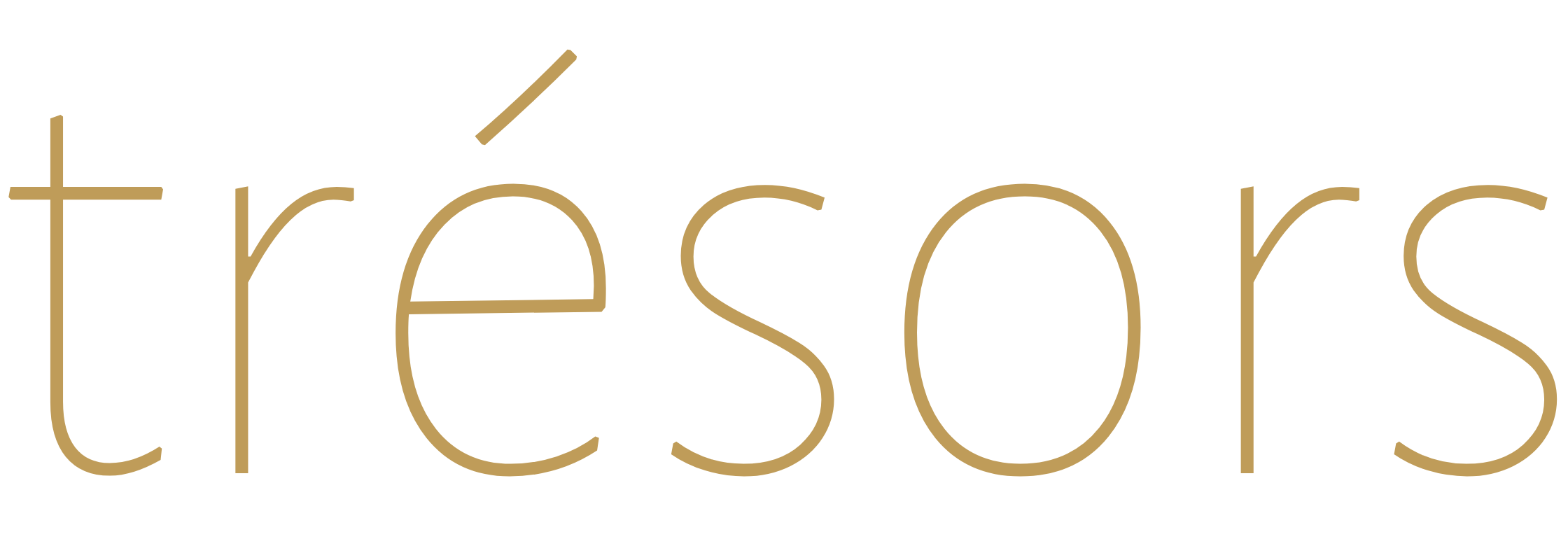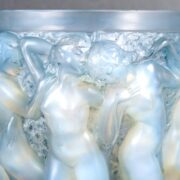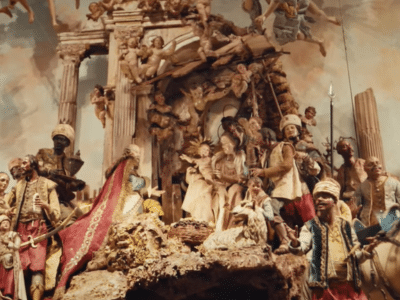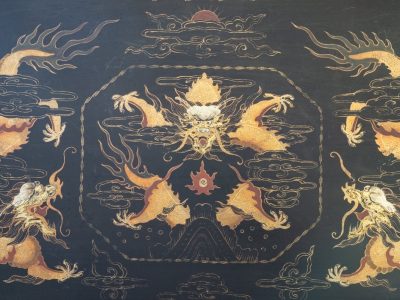Revolutionary faience from Nevers focuses on the period 1789-1794, from the beginning of the French Revolution until the establishment of the Directory. The iconography evolved over these five years as France transitioned from a constitutional monarchy to a republic, and as a war—both internal and against foreign powers—claimed many lives.
This faïence is a popular art form that testifies to the expansion of the middle class in the second half of the 18th century, made up of the bourgeoisie and the wealthier segments of the peasantry. Today, collecting this faience is a unique way to shed light on the French Revolution and preserve testimonies of this crucial period in history at home.
What Revolutionary Faience Is
Revolutionary earthenware, developed during the French Revolution, is decorated with polychromatic motifs and mottoes illustrating the ideals of a new and disputed nation. They are mostly decorative plates, but can also be dishes, bowls, or jugs.
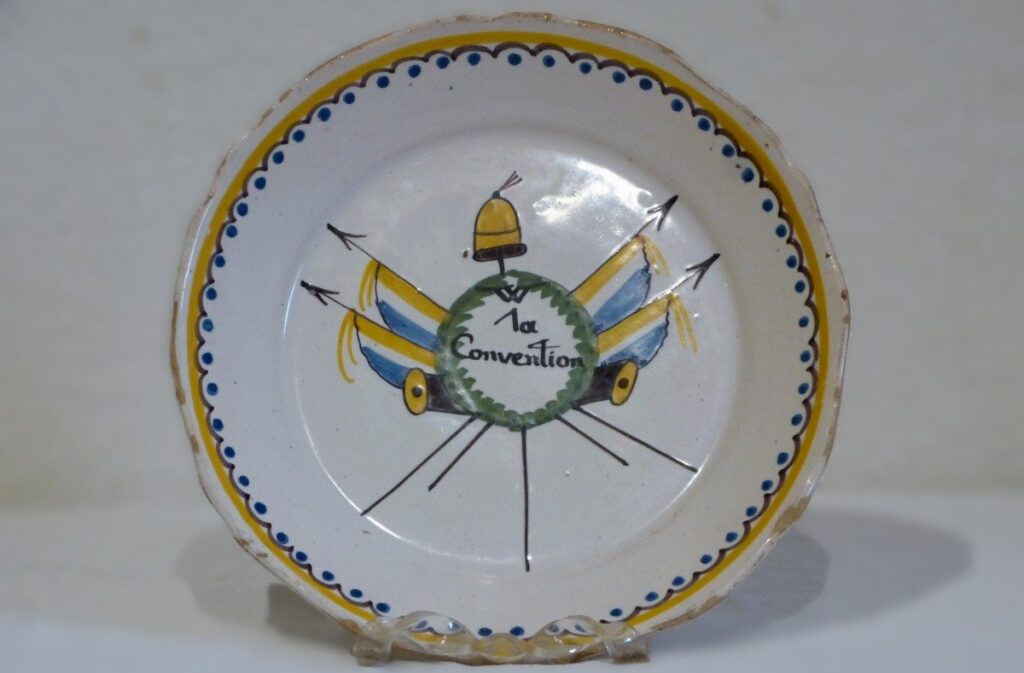
“Long live the Convention” (Vive la Convention) says the inscription. This is a strongly patriotic Nevers faïence with four French flags, a Phrygian cap, and five spears. The Convention period starts in September 1792, after Louis XVI and the royal family were arrested. © Galerie Vaudemont
These items were produced for the general public by ordinary faience workshops and were most often displayed on walls or in a dressoir (sideboard). As the people were largely illiterate, the symbols had to be simple and the design instantly evocative. The bold colors and precise lines on a white background give it a naïve quality.
The themes evolved from the beginning of the French Revolution (after the opening of the Estates-General on May 5, 1789) to the Directory, closing the notorious Reign of Terror, in the summer of 1794. We can follow the episodes of this tumultuous history on the faience.
The Nevers Faïence, Dominating Revolutionary Faience
With this article, we decided to focus on the Nevers revolutionary faïence. However, the Nevers factory was not the only one to produce them. Indeed, revolutionary faience was also made in Roanne, as well as in Lorraine and northern France (e.g. Les Islettes, Waly, Desvres, Badonvillers, Ancy-le-Franc).
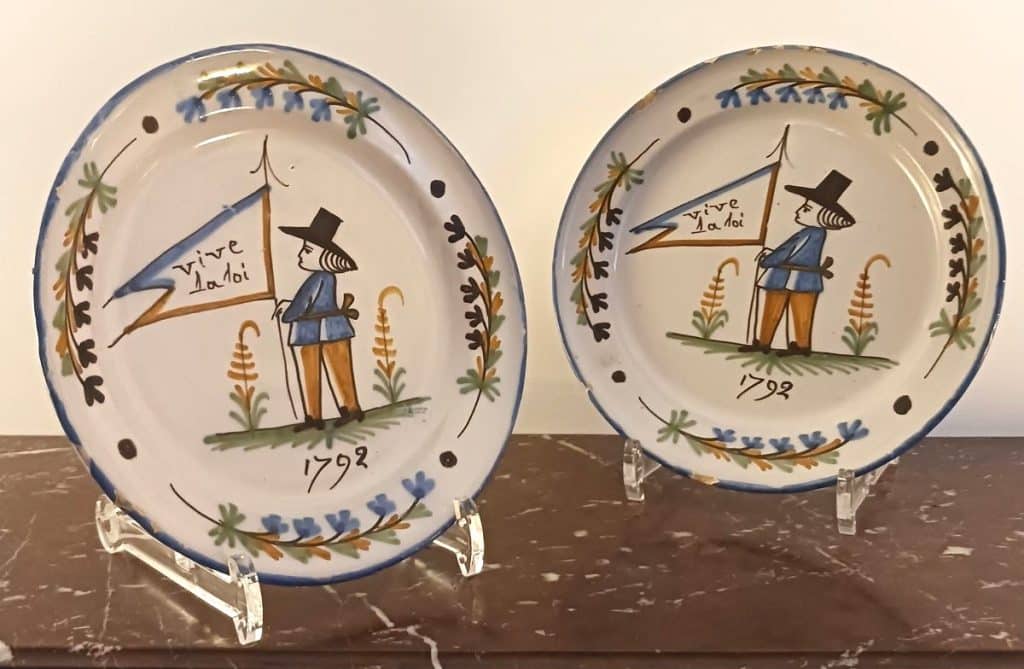
A classic revolutionary faience model not made in Nevers but in Roanne, with the typical bargee from this area. On the flag, the motto “Long live the law” (Vive la loi). “Long live liberty” (Vive la liberté) was an alternative. This one is dated 1792. © Galerie Vendémiaire
Yet, Nevers produced more revolutionary faïence than any other location for several reasons. First, with 12 factories, Nevers was the third largest faience production center in France (after Rouen and Paris, respectively 16 and 14 factories). Nevers was the cradle of true faience in France, with its first manufacture established in 1584 through the collaboration of several potters of Italian origin from Albisola and Faenza.
Second, Nevers developed during the 18th century (the golden age of French faience) the tradition of faience with inscriptions (or faïence parlante in French), which had a defining influence on revolutionary faience.
Evolving From the Inscribed Faience and Patriotic Faience
Nevers was a major center for inscribed faïence, which took various forms. It also incorporated elements of patriotic decoration originally developed in Moustiers.
Patronymic Faience
“Patronymic faïence” describes pottery whose decoration is personalized with a first name, a family surname, a date, and typically features the image of a patron saint (of the first name or profession). In getting these products, the middle class copied the aristocracy, which put their coats of arms on their tableware.
Tree of Love or Tree of Life
The theme of the Tree of Love was originally illustrated in prints. Popular faience was prone to reusing topics that first created the buzz via prints. In the case of the Tree of Love, the faïence is very “talkative”: the quantity of inscriptions is striking. In the middle, it describes what the women are doing. The dialogs between the men and women are written on the rim. The first bowls or dishes with this imagery were made around 1730, and the last ones circa 1810.
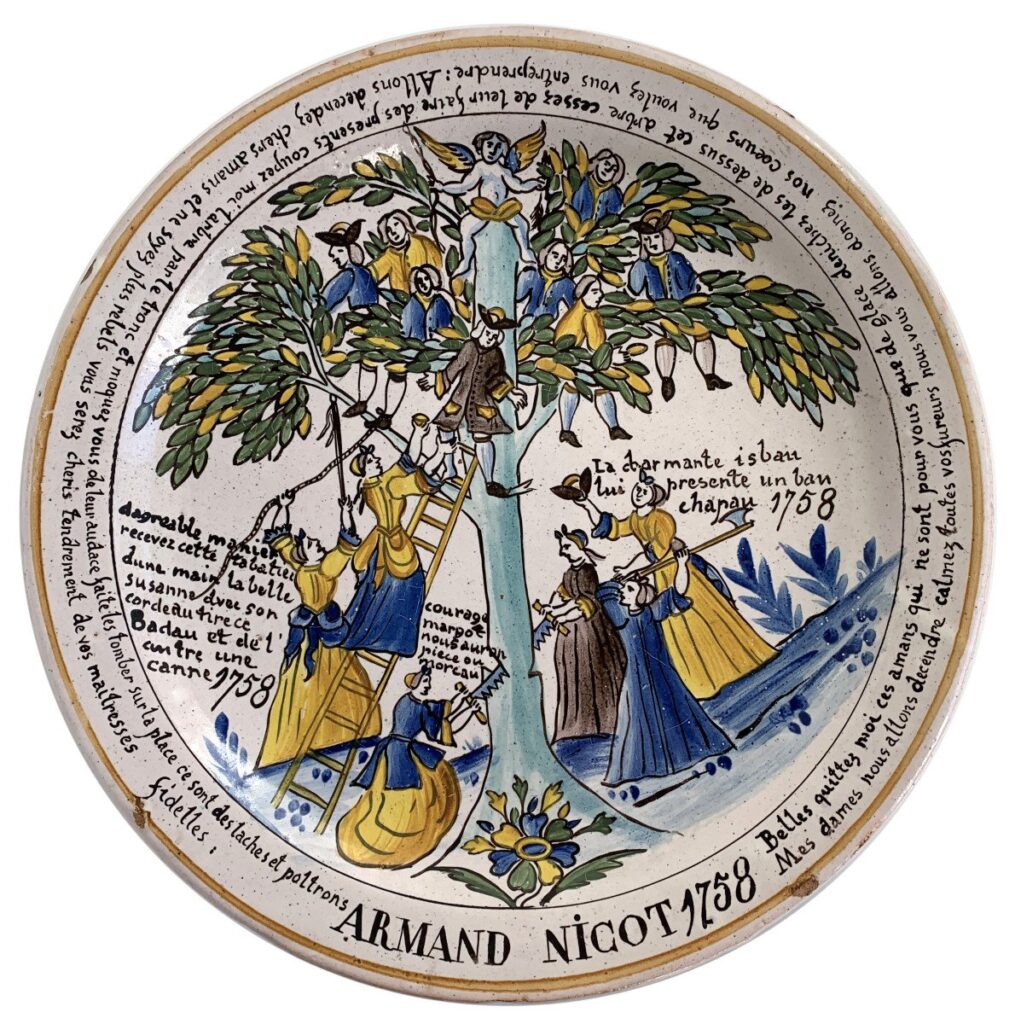
This Nevers faïence specimen is both decorated with a Tree of Love and a patronymic faience for Armand Nicot, dated 1758. The inscriptions describe the scene comically and include dialogue. © Galerie des Songes
The women are attempting by all means to get men down a tree crowned by a cherub (hence the tree of love). What are they ready to do to get a lover? They are either bribing them with a snuffbox or a hat or being aggressive (chopping down the tree, threatening with a stick) to serve their purpose. It is a satire where societal roles are reversed, making fun of women who would stop at nothing to find a husband.
Patriotic Faience
The “band decor” or “decor with flags” (décor à la fanfare or décor aux drapeaux in French) was initiated in Moustiers by Olérys but above all carried out by his pupil Joseph Fouque to celebrate the French victory of Fontenoy in 1745. Nevers gave it its own twist with a central medallion boasting three fleurs-de-lis topped by a crown and flanked by flags. Below the medallion are arranged wind instruments, a drum, and cannonballs.
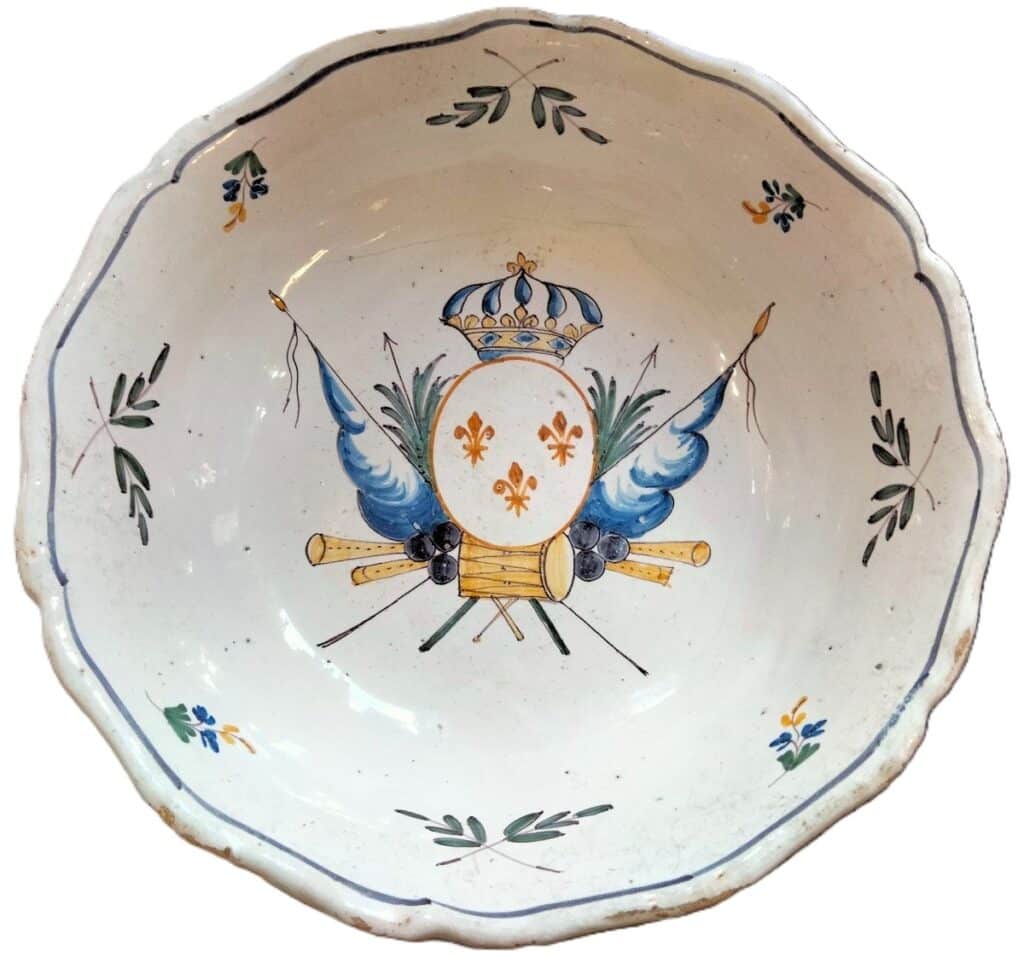
A pre-Revolution Nevers salad bowl with a flag decor inspired by Moustiers faience. © Philippe Hournau Antiquités
What the Faïence Says about the French Revolution
United We Stand: The Three Orders and the Nation
The union of the Three Orders was a major topic, especially significant at the start of the French Revolution when the Three Orders gathered at the Estates General in May 1789. This theme represents approximately 25 to 30% of the Revolutionary faience during the 1789-1794 period.
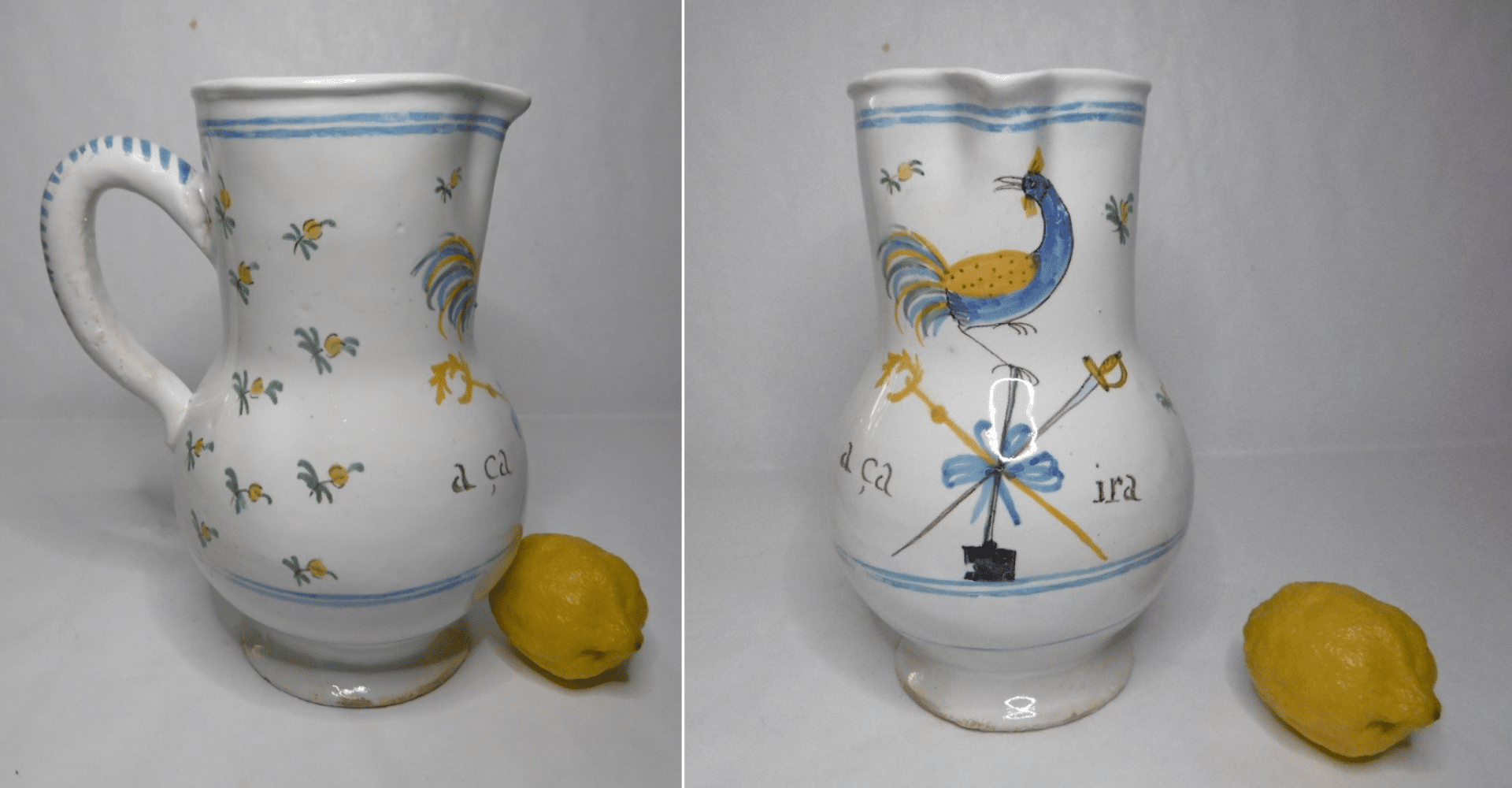
Nevers faience water jug decorated with a rooster standing atop the symbols of the Three Orders, accompanied by the widely popular revolutionary song “Ça ira.” The rooster represents the French nation, its fighting spirit, and constant vigilance. © François Berger
There are two typical representations of the Three Orders. Either a caricature inspired by prints showing the frustration of the Third Estate (the commoners) with its exploitation by the nobility and the clergy, or a trophy composed of the symbols of each order (a crozier, a sword, and a spade or shovel). It could even carry sometimes the motto “Long live the Nation, the Law, the King”. The King is mentioned but comes last.
The association of the three symbols was particularly relevant during the constitutional monarchy before the royal family was arrested (April 1792) and the monarchy was abolished (September 1792). This decor was still produced until 1793.
With the three symbols tied by a single knot, there is a stance of equality between the three orders. Nevertheless, it was a revolution targeting the privileges of two of these groups, the clergy and the nobility, which necessarily suffered from the upheaval.

The crozier and the sword represent the clergy and nobility, bound together, with the purse full of money made with the sale of their assets. © JM Bealu & Fils
The confiscation of clergy and nobility assets was a key revolutionary event. The sale of what had become national property started in late 1790. The depiction above deserves special attention: the purse, tied to the crozier and sword with a delicate blue bow, turns their forced contribution into what appears to be a peaceful offering to the national treasury. A ça ira ! is the mantra. Yes, officially, everything is going to turn out just fine for everybody!
The Bastille, a Long-Lasting Symbol
We can see that the Bastille has been a significant symbol of the French Revolution from the beginning. Yet, it has a double meaning on the faience, depending on when it was painted. At the start of the revolution, it was a celebration of the success of the prison siege.

This Nevers faïence decorative barrel, dated 1789, has a noteworthy decoration. On one side, the Bastille with an inscription: André Nouvellois rentier 1789. The same inscriptions are also on both flanks. On the other side: foliage with flowers and berries. © Giron Antiquités
Above, the faience barrel perfectly illustrates the filiation of revolutionary and patronymic faience. It is dated 1789 with the Bastille on it. Note the blue republican flag on the Bastille. The inscription André Nouvellois rentier points to the type of clientele for Nevers faïence: a bourgeois rentier able to live comfortably on his private income.
After 1792, as France found itself at war with numerous royalist powers, the Bastille also came to symbolize a nation under siege by an imposing coalition—including Austria, Prussia, Great Britain, Spain, the United Provinces of the Netherlands, Portugal, Sardinia, Sicily, and the Holy Roman Empire.

La Bastille on a Nevers faience plate during the French Revolution. © Antiquités Alric
The Revolution Heroes
The Biggest Figures
This should not come as a surprise to you: even during the constitutional monarchy, the revolution heroes were not the King or Queen—which could be found on faience before the start of the Revolution. Yet, in the early days of the Revolution, one didn’t need to be a fervent revolutionary to be depicted on a Nevers dish. Popularity was enough, as in the case of Necker. As Louis XVI’s Finance Minister, his dismissal by the King was one of the sparks that led the people of Paris to storm the Bastille on July 14, 1789.
Mirabeau, who passed on April 2nd, 1791, was the first “great man” whose remains were received in the Pantheon. The plate below was most likely made before November 1792, when the scandal of the iron chest uncovered Mirabeau’s duplicity and his negotiations with Louis XVI. Or at least before his remains were removed from the Pantheon in 1794.
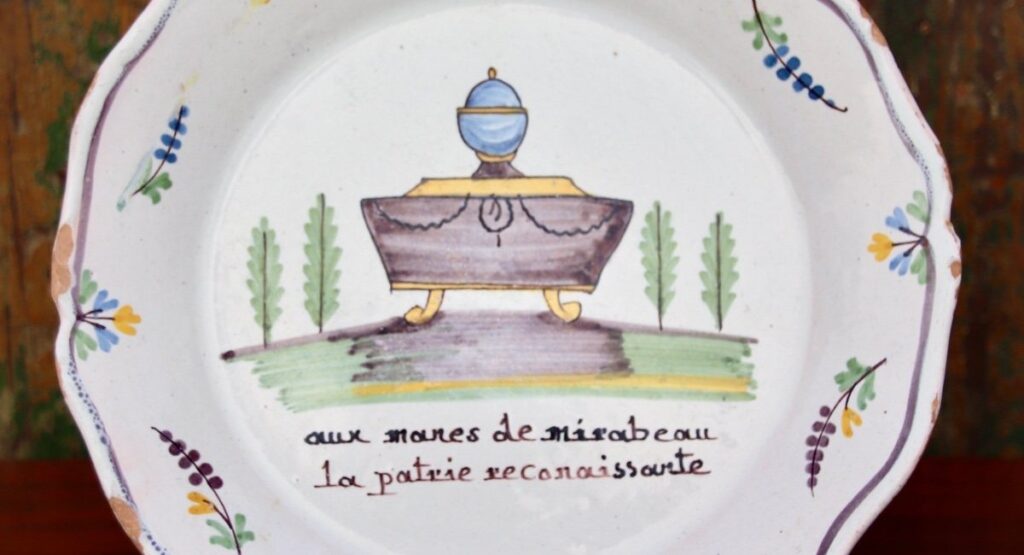
A homage to the great revolutionary man, Mirabeau. The inscription says: To the soul of the deceased Mirabeau, the grateful homeland (Aux mânes de Mirabeau, la patrie reconnaissante). © Antiquités Expertise Guillaume Rullier
Assassinated on July 13, 1793 by Charlotte Corday, Marat was one of the Freedom Martyrs (like Le Pelletier and Chalier), the subject of prints in 1793-1794. The “Friend of the People” symbolized a revolution without concessions, explaining why he was honored with his portraits on revolutionary faience.
You may wonder, and rightly so: where are the women? Indeed, they are difficult to find on the revolutionary faïence. And the only instance found, “The republican spanking” (La fessée républicaine), isn’t exactly flattering to women. In fact, the women aren’t even portrayed in a recognizable manner. The republican spanking scene shows a hand striking buttocks with birch rods. It alludes to Jacobin women who assaulted Théroigne de Méricourt for her support of a Girondin leader in May 1793. It was a brutal public humiliation, brought to an end by Marat’s intervention.
Live Free or Die: Everyone Can Become a Martyr
All can sacrifice their life for the revolutionary cause. It should not be seen as the privilege of enlightened and committed politicians. This needs to be claimed loud and clear as civil war and war against external forces rage.
Men were needed on different fronts (300,000 men were conscripted in 1793). To give them courage to defend the nation, the mottoes “Live Free or Die” or “Liberty or Death” remind them of what is at stake, what they fight for.
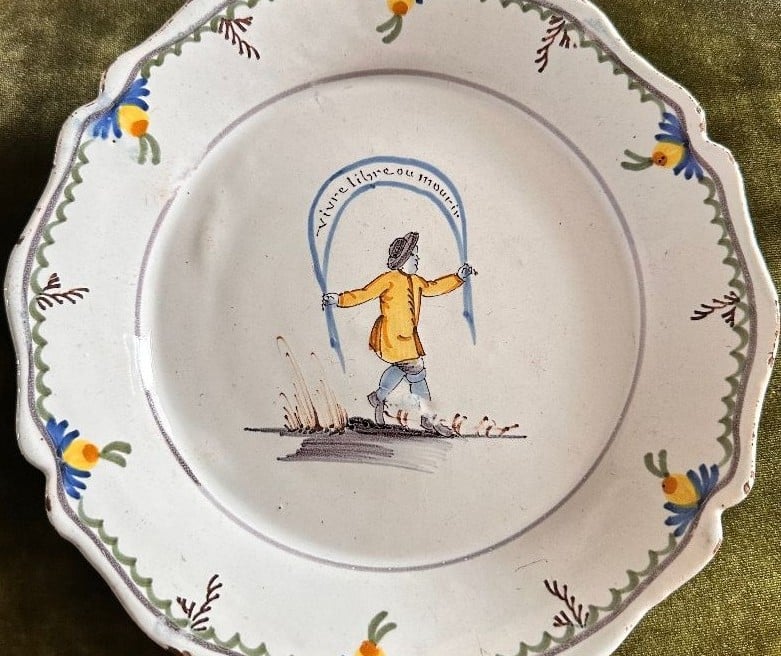
Nevers revolutionary plate showing a man holding a banner with the inscription “Live Free or Die” (Vivre libre ou mourir). © Centule Antiquités
Liberty and Other Ideals Championed by the Revolutionaries
The Declaration of the Rights of Man and of the Citizen, adopted in August 1789, together with the new constitutions of 1791 and 1793, established the principles of a new and evolving political order. People purchasing faiences showcasing these ideals were claiming their support.
Going over just the first article of the Declaration of Rights, the most prevalent ideals are already there: “Men are born and remain free and equal in rights. Social distinctions may be founded only upon the common good [“common utility” with a verbatim translation]”—liberty, equality, utility.

“Union, force, liberty, homeland” are claimed on this Nevers faience plate. It shows the classic flag decor with the Three Orders as well, but interestingly, the crozier is not visible. © Antiquités Chantal Ceceille
It is worth noting that “Liberty, Equality, Fraternity” only became the official motto of the French Republic with the Constitution of 1848 (Second Republic). This explains why it does not appear as such on faïence pieces from the 1789 revolution. Instead, the ceramics sometimes highlight combinations of values—such as the pairs “Union–Liberty” or “Liberty–Equality”—or feature only one of these ideals.
Liberty
Liberty is the most popular ideal promoted by the faïence decorators, so important that it is worth dying for, as we saw earlier. The most common symbols for liberty during the French Revolution were the Phrygian cap, the Tree of Liberty, and an open cage (or a bird outside a cage, an iconography that already existed before 1789).
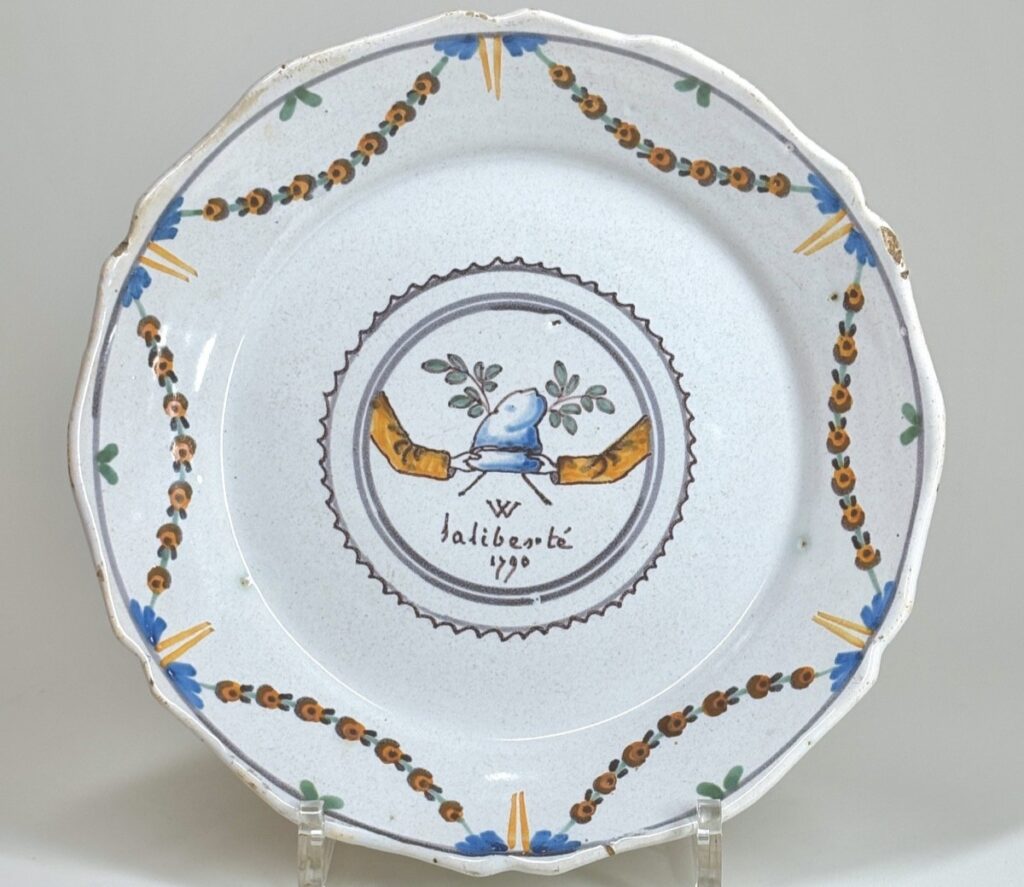
A Phrygian cap held by two hands symbolizes liberty and the unity of those defending it. A Nevers revolutionary plate dated 1790. © Bils Céramiques
The Phrygian cap has a long history. In ancient Rome, the felt cap was already worn by a slave once freed. Appian also wrote in “Civil Wars” that after Julius Caesar’s murder, the conspirators carried across Rome a cap of liberty (pileus) on the point of a spear.
Trees of Liberty started to be planted in municipalities in 1790 (ideally, a strong but not too big oak or poplar). But they significantly rose in popularity in 1792 to strengthen the unity fervor in times of war. Around 60,000 of them were planted according to Abbé Grégoire. The planting of a tree was a celebration (people would sing and dance “La Carmagnole” around it).
Freedom can also be represented in a lighter form with a bird getting away from a cage or, probably influenced by La Fontaine’s Fables, a fox after a bird who doesn’t seem to notice, maybe as a warning that defending liberty requires heightened vigilance.
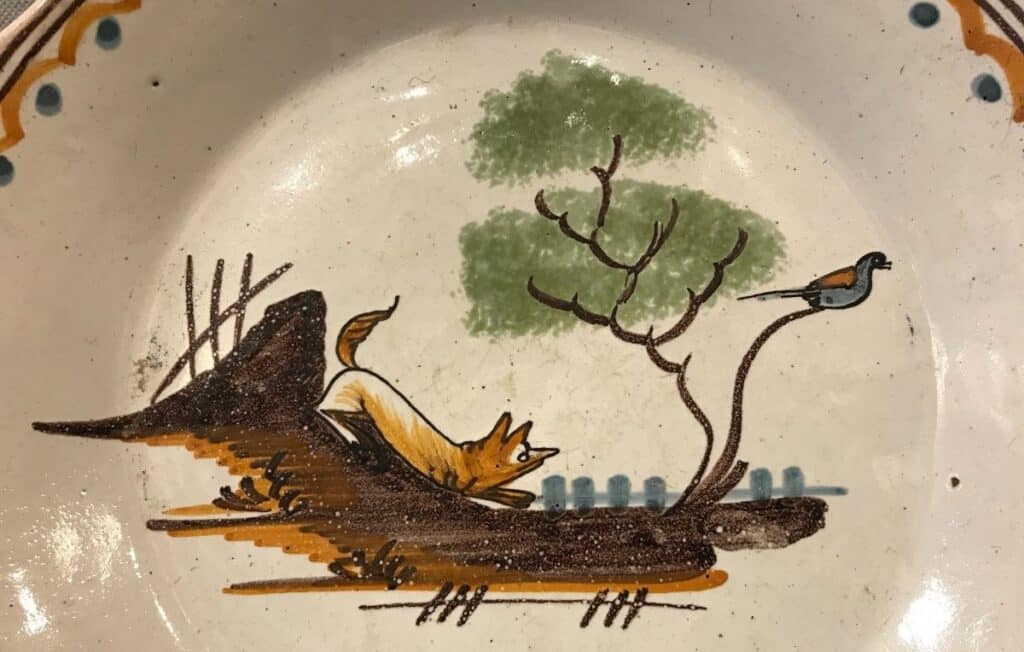
A fox after a bird on an 18th-century Nevers plate is a revolutionary symbol for liberty. © Antiquités Haye
Other Revolutionary Ideals
There are several such ideals, many of which underpin the themes explored in this article. For this reason, we’ll throw these ideals celebrated by the Nevers faïence at you, in a heap, not woven into wreaths: law (for the legislative power), equality, utility, nation or homeland, being a good citizen.
Defending the Nation
You never see violence on the revolutionary faience despite an approximate half a million dead during the French Revolution (including the war against the external coalition, the civil war in Vendée, terror, and repression of all sorts).
The Legislative Assembly declared war against Austria in April 1792. Soon, Prussia joined Austria. They invaded France. The French victory at the Valmy battle in September 1792 was crucial to stop them and boosted French morale.

A roaring lion holding a cannonball: he is guarding a tree of liberty crowned by a Phrygian cap. This design can also be found with the inscription “I am invincible” (Je suis invincible). © AJ Antiquités
The year 1793 was particularly turbulent, as additional countries joined the coalition against France. At the same time, the Counter-Revolution reached its peak with the bloody Vendée uprising. Compounded by the Federalist revolts, these crises led the Committee of Public Safety to adopt increasingly dictatorial measures, ushering in the Reign of Terror from September 1793 until the fall of Robespierre in July 1794.
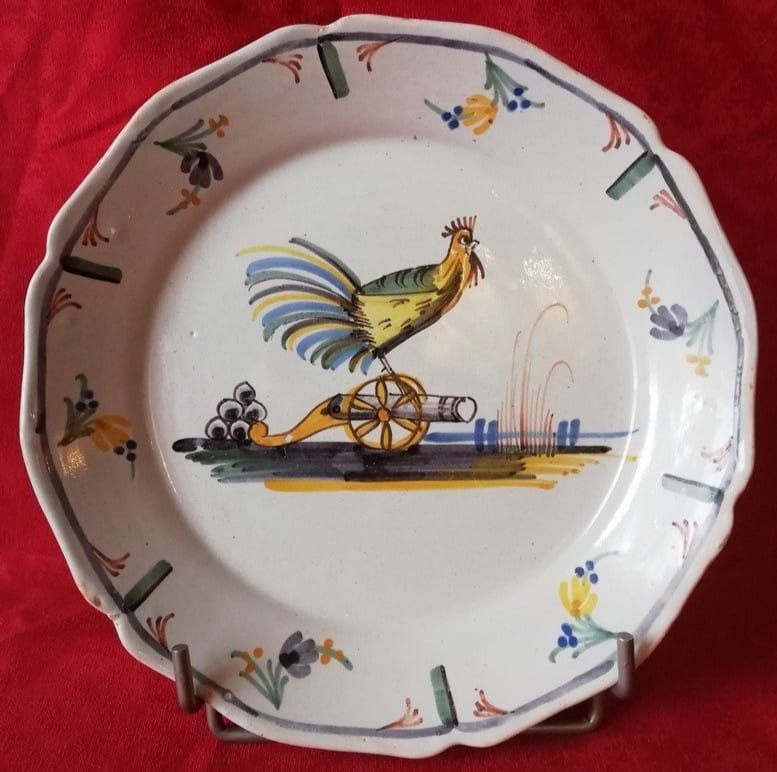
The rooster of the French nation is watching to defend it against opposing forces. It sometimes carries the inscription “I watch for the nation” (Je veille pour la nation). © Forezienne d’antiquités
Towards Peace
Of course, the conflicts needed to end for the stabilization of the Republic, and it could only be reached with victories on all fronts. The population strived for peace, and the politicians needed it too.
With the Terror, faience production considerably slowed down. The two designs below were likely created in 1793.
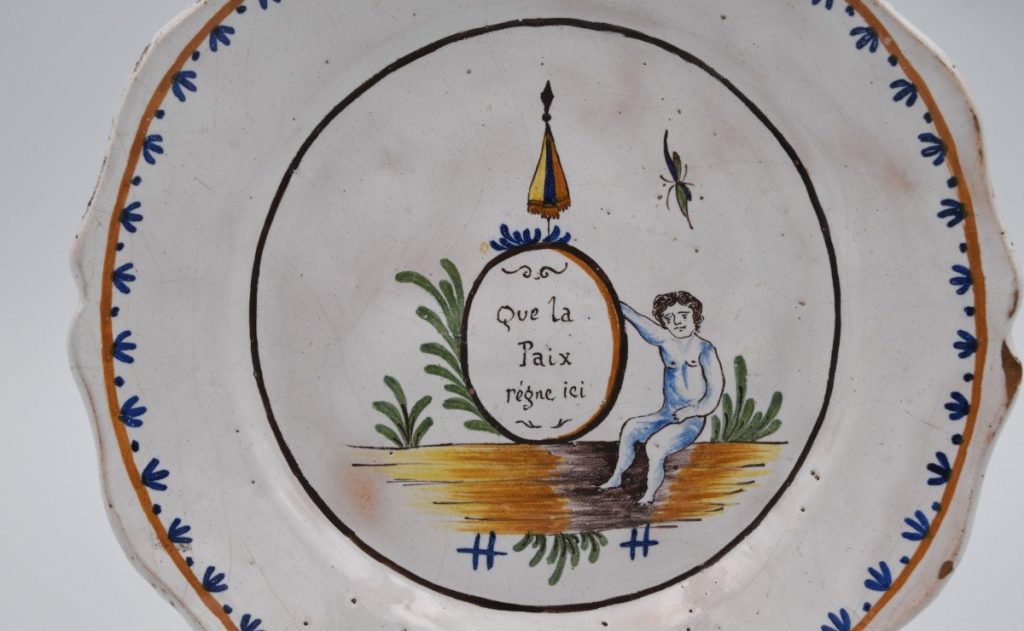
On this Nevers faience plate, a putto holds the motto “May peace reign here “. © AJ Antiquités

The setup is not without creativity on this plate. A traveler saying “I want to get there” (je désire y arriver) is heading towards the Peace Hotel (hôtel de la paix). © François Berger
####
The main sources of this article:
- Champfleury (1875). Histoire des faïences patriotiques sous la Révolution. E. Dentu.
- Teacher kit of the Louis Heitschel collection of revolutionary faïences at the Joseph Déchelette Museum in Roanne.
- Rosen, J. (2021). La faïence en France du XIIIe au XIXe siècle (1–). ARTEHIS Éditions.
####
You May Like
French Revolutionary Faience | Nevers Faience | French Revolution

